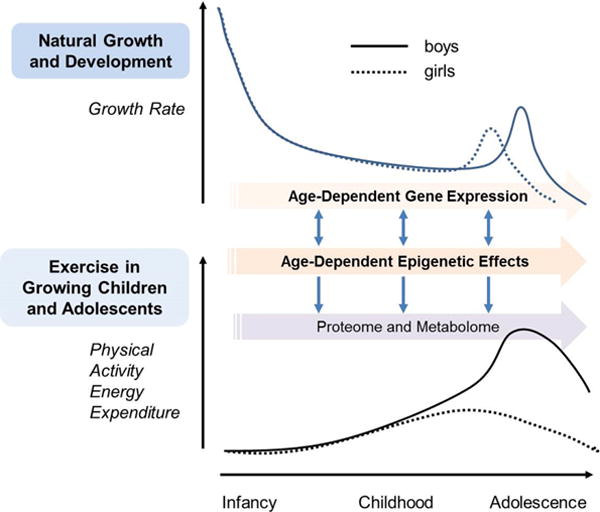Figure 1.

Interacting mechanisms of growth and physical activity in children and adolescents. Top Panel: Human growth is unique in the duration of childhood and in the magnitude of the pubertal growth spurt. Bottom Panel: Levels of physical activity (highly variable -shown here are estimates culled from the literature) are also dynamic during growth. Sexual dimorphism is also prominent in both human growth and levels of physical activity. Pioneering work is revealing how specific genes and epigenetic mechanisms influence growth at different stages. Exercise also influences genes and epigenetic processes. Ultimately, genetic and epigenetic activity drives the proteome and metabolome leading to dynamic phenotypes during childhood and across the lifespan. The challenge for the future is to map the link between these two processes and use this information to shape policies and guidelines around the optimal use of physical activity in healthy children and in children with chronic disease and disability.
